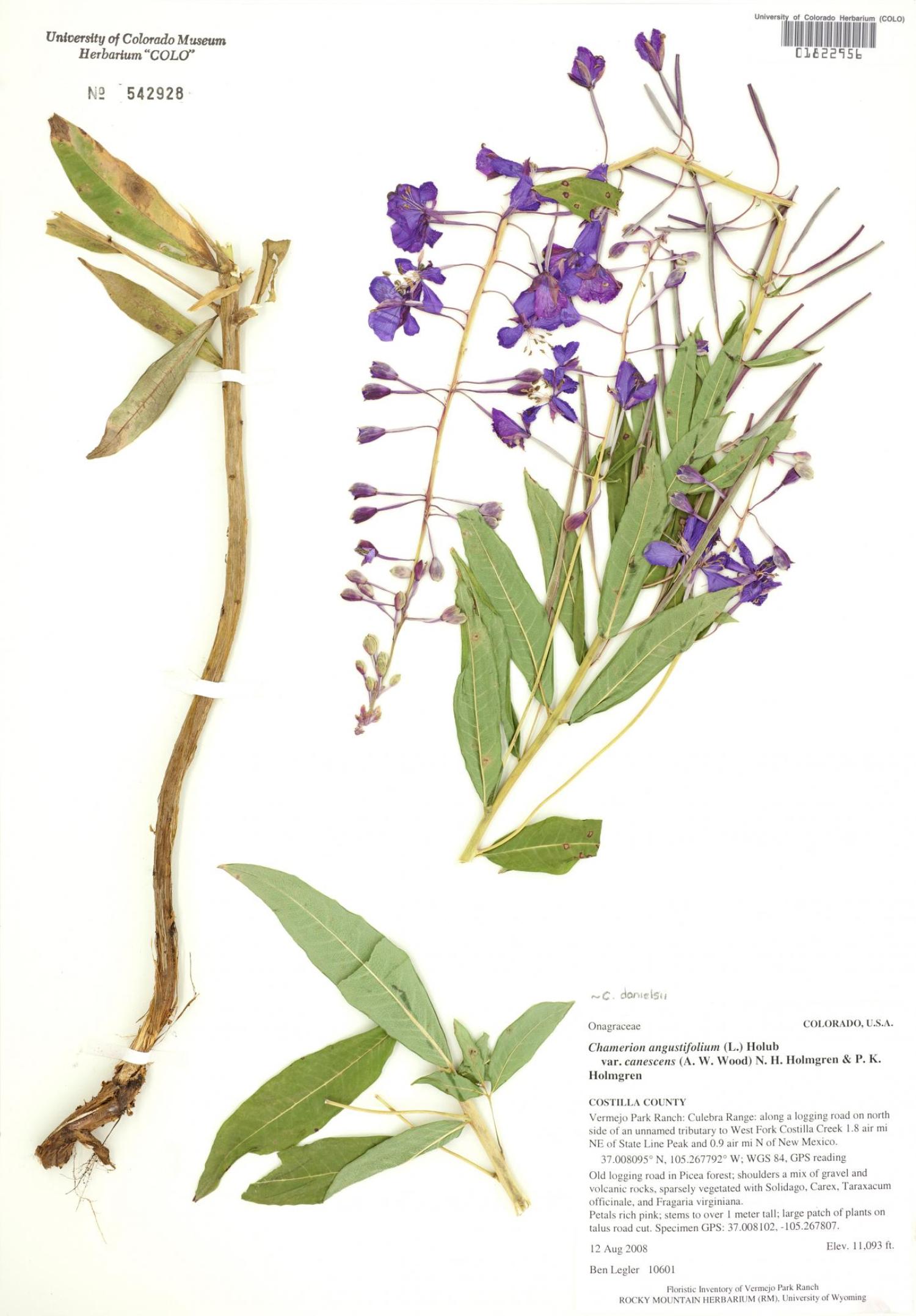Temporarily Closed
During the final phase of the Hellems Building reconstruction project, the CU Museum will be closed for reorganization. We will reopen on the first day of Spring Semester, January 8, 2026. Special access requests will be considered on a case-by-case basis. Please email cumuseum@colorado.edu for more information.
Fireweed
Fireweed is a pioneer plant named for its tendency to colonize areas impacted by natural occurrences such as fire, landslides or avalanches plus soils disturbed by logging, petroleum extraction and surface mining. Fireweed serves an important ecological role in stabilizing upset soils. Its tiny seeds and rhizomes (underground root system) reach deep, even crack through rocks to pull minerals up from deep within the earth.
Fireweed plants are highly adaptable and capable of self-fertilization. They are prolific producers of tiny seeds that are embedded in white hairs that act as parachutes of dispersal in the wind. It is also an important food source for muskrats, moose, mule deer, elk, and bear. The plant provides nectar for bees late in the season. Spring shoots and tea made from the leaves are traditional foods of native people from Siberia and Scandinavia to the Yukon and Alaska.
Late summer landscapes in the mountains of Colorado can be enlivened by large patches of fireweed growing from underground rhizomes, with fuchsia colored flowers turning to silky seed heads in the early autumn light.


